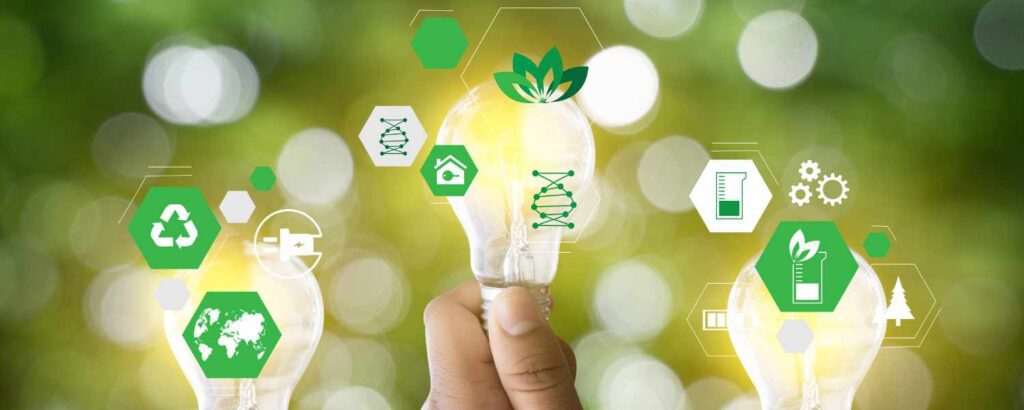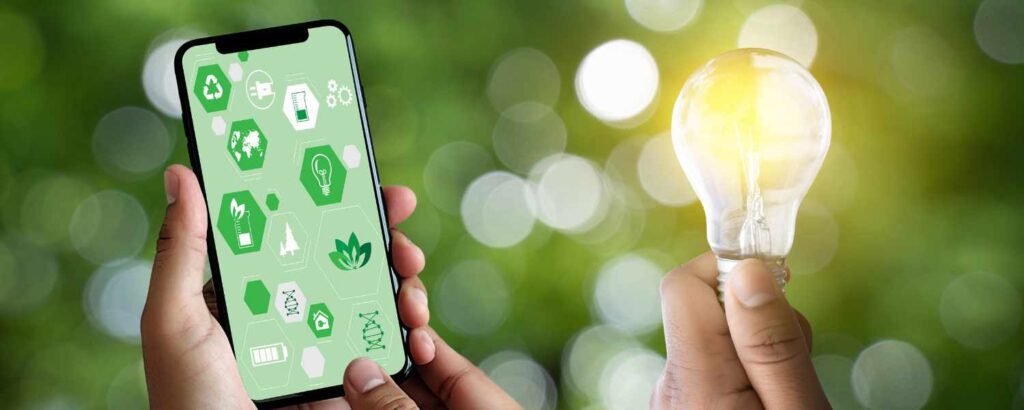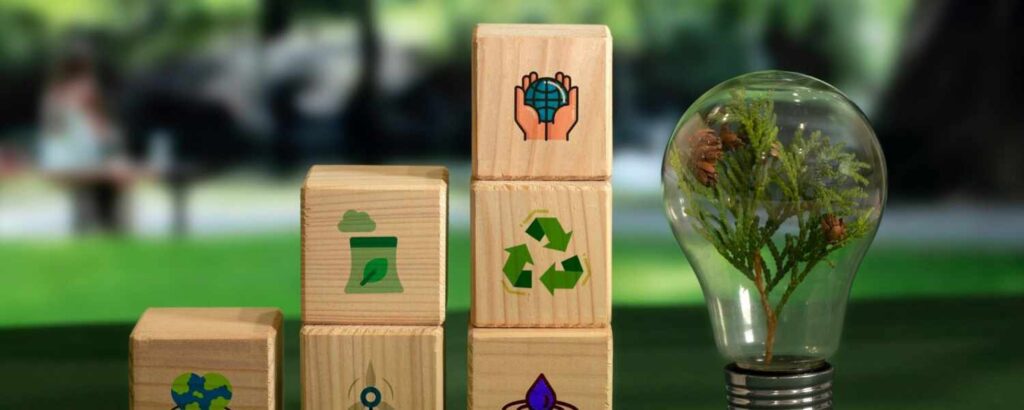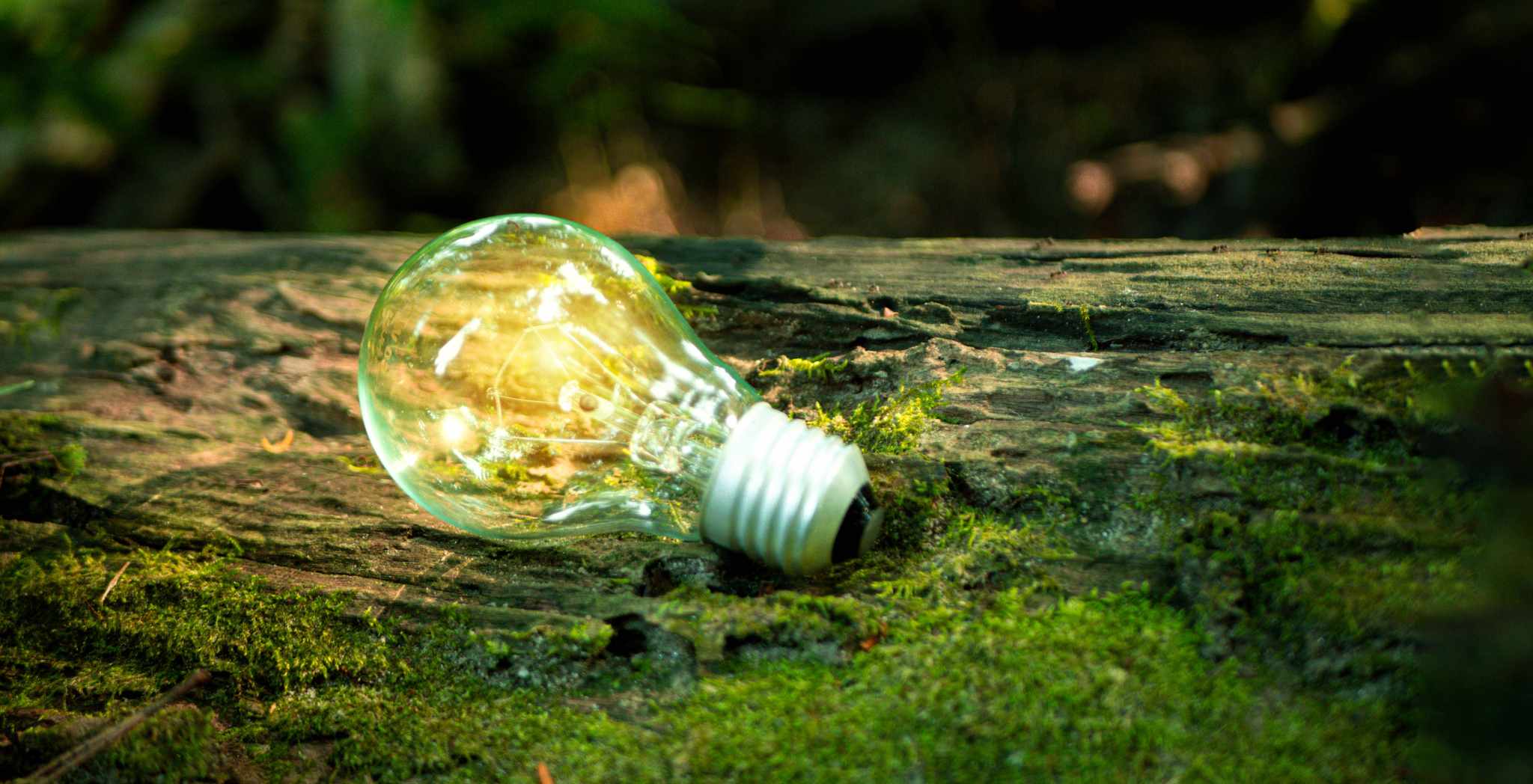In the modern world, where the impacts of climate change and environmental degradation are becoming increasingly undeniable, the quest for sustainability is not just a trend but a necessity. This urgency has led to a new paradigm called “Sustainable Innovation.”
This concept is not merely about creating new products or services but about doing so in a way that leads us toward a more sustainable and equitable future. This comprehensive guide delves into sustainable innovation, how it differs from disruptive innovation, and why it’s crucial for our collective future.
Definition of Sustainable Innovation

With its emphasis on holistic progress, sustainable innovation integrates several key characteristics that distinguish it from traditional innovation models. The importance of sustainable innovation lies in its ability to merge economic development with environmental stewardship and social equity, thus paving the way for a sustainable, equitable, and resilient future.
These characteristics ensure sustainable innovations drive economic growth, meet societal needs, and enhance environmental health and resource conservation. Understanding these features can provide deeper insight into how sustainable innovation operates and its impacts:
1. Eco-efficiency
Sustainable innovations aim to deliver more goods and services with less use of resources, less waste, and less pollution. This characteristic is about doing more with less, ensuring that every step of production and consumption minimizes environmental impact and maximizes efficiency.
2. Circularity
A core principle of sustainable innovation is adopting circular economy practices. This involves designing products and systems so they can be reused, recycled, or composted, thereby reducing waste and extending the lifecycle of resources. Circular innovations challenge the traditional linear ” take-make-dispose ” model and replace it with a closed-loop system.
3. Social Inclusivity
Sustainable innovations consider the social impact and strive to be inclusive, benefiting a broad spectrum of society and ensuring that no group is disadvantaged. This includes creating opportunities for marginalized communities, improving working conditions, and providing equitable access to the benefits of innovation.
4. Resilience
These innovations are designed for environmental, economic, and social resilience. They contribute to the strength of the systems they are part of, helping societies adapt to changing circumstances, such as climate change or economic fluctuations, in sustainable ways.
5. Life Cycle Thinking
Sustainable innovations involve considering the entire life cycle of a product or service, from raw material extraction to end-of-life disposal or recycling. This holistic perspective helps identify opportunities for reducing environmental impacts at each life cycle stage.
6. Regenerative Design
Beyond reducing harm, sustainable innovations often aim to impact the environment and society positively. This can include enhancing ecosystems, enriching biodiversity, and contributing to the regeneration of natural systems.
7. Interdisciplinary Collaboration
Sustainable innovation frequently requires merging knowledge and techniques from various disciplines. It involves collaboration between scientists, engineers, business leaders, policymakers, and communities to create viable solutions.
8. Long-term Perspective
Unlike innovations driven solely by immediate market demands, sustainable innovations are guided by a long-term perspective. They are evaluated not just on their short-term benefits but on their ability to contribute to sustainability goals over decades.
By embodying these characteristics, sustainable innovations offer a path forward that aligns economic development with environmental stewardship and social well-being, paving the way for a more sustainable, equitable, and resilient future.
Sustainable Innovation vs. Disruptive Innovation

While sustainable and disruptive innovations can significantly alter the market landscape, their foundational objectives diverge. Disruptive innovation seeks to gain a competitive edge by displacing existing markets, products, or technologies. In contrast, sustainable innovation ideas prioritize environmental and social considerations, aiming to transform markets and behaviours to align with sustainability principles.
A prime example of sustainable innovation in business is the transition from fossil fuel-based vehicles to electric cars, which reduces greenhouse gas emissions and decreases dependence on non-renewable energy sources. The essence of sustainable innovation lies in its focus on creating long-term, positive impacts on the planet and society, distinguishing it from the market-centric approach of disruptive innovation.
The key distinction between sustainable and disruptive innovation lies in their primary focus, purpose, and overall approach toward innovation:
1. Primary Focus
a.) Sustainable Innovation
Aims to integrate environmental stewardship, social equity, and economic viability into developing new products, services, or processes. It focuses on creating solutions that contribute positively to the planet and society.
b.) Disruptive Innovation
Centres on creating products, services, or business models that disrupt existing markets by offering an alternative that is often cheaper, more accessible, or more convenient without necessarily prioritizing environmental or social impacts.
2. Purpose
a.) Sustainable Innovation
Seeks to address and solve complex environmental and social challenges while driving economic growth. It aims to foster a transition towards more sustainable practices across industries and societies.
b.) Disruptive Innovation
Aims to capture market share and achieve a competitive advantage by overturning the status quo and introducing novel ways of meeting consumer demands.
3. Overall Approach
a.) Sustainable Innovation
Involves a holistic and systems-based approach, considering the long-term impacts of innovation on environmental, social, and economic systems. It often requires interdisciplinary collaboration and stakeholder engagement to ensure viable and inclusive solutions.
b.) Disruptive Innovation
Typically, a market-driven approach focuses on technological or business model innovations that can displace established competitors. The emphasis is on rapid growth and scalability, sometimes at the expense of broader societal or environmental considerations.
Examples of Sustainable Innovations

Innovations like solar panels, wind turbines, and precision farming are a testament to the diverse and impactful sustainable innovation ideas implemented globally. These examples not only showcase the potential for sustainable innovation in business to mitigate environmental impact but also underscore the versatility of sustainable practices across various sectors.
Other notable key examples of sustainable innovations that are driving us toward a greener future include:
1. Renewable Energy Technologies
Solar panels and wind turbines exemplify the shift to cleaner energy sources, moving away from fossil fuels to reduce carbon emissions and combat climate change.
2. Precision Farming Techniques
The use of advanced data analytics and technology in agriculture to optimize resource usage, such as water and fertilizers, thereby enhancing yield while minimizing environmental impact.
3. Biodegradable Materials
Development of naturally decomposing materials, significantly reducing waste and pollution and offering a sustainable alternative to traditional plastics and non-degradable materials.
These examples highlight the diverse sectors—energy, agriculture, and materials science—where sustainable innovations are making significant impacts, showcasing sustainable practices’ broad applicability and transformative potential.
Best Practices for Sustainable Innovation

Adopting sustainable innovation requires more than good intentions; it necessitates a strategic approach. Key practices include:
1. Stakeholder Engagement
Involving a wide range of stakeholders, from customers to community members, ensures that innovations are socially inclusive and meet real-world needs.
2. Life Cycle Thinking
Assessing the environmental impact of products or services throughout their entire life cycle, from production to disposal, helps identify areas for improvement.
3. Collaboration
Partnering with other organizations, including NGOs, government bodies, and other businesses, can pool resources and expertise, driving more significant innovation.
4. Transparency
Being open about processes, challenges, and impacts builds trust and encourages others to adopt sustainable practices.
How Do We Make Innovation Sustainable?

Making innovation sustainable involves integrating environmental and social considerations into every stage of the development process. It requires a shift in mindset from short-term gains to long-term sustainability goals. Companies must embrace circular economy principles, designing products that can be reused, recycled, or repurposed at the end of their lifecycle.
Governments and policymakers also play a crucial role by setting regulatory frameworks that encourage sustainable practices and providing incentives for companies to innovate in environmentally friendly ways. Education and awareness-raising are equally important, empowering consumers to make informed choices and demand more sustainable products and services.
To make innovation sustainable, key actions include
1. Integrating Sustainability into Development
Embed environmental and social considerations into every aspect of the innovation process, from concept to disposal, prioritizing long-term ecological and social well-being over immediate profits.
2. Adopting Circular Economy Principles
Design products and systems for reuse, recycling, or repurposing to minimize waste and extend resource lifecycles, moving away from the traditional linear “take-make-dispose” model.
3. Setting Supportive Regulatory Frameworks
Governments and policymakers should establish regulations and incentives that promote sustainable practices, encouraging companies to develop and adopt eco-friendly innovations.
4. Enhancing Education and Awareness
Increase public understanding and support for sustainable innovations through education and awareness campaigns, empowering consumers to make choices that drive demand for sustainable products and services.
Conclusion
At VectorGlobe, our endeavours extend beyond mere innovation; they represent a transformative approach to industrial environmental engagement. Our sophisticated Industrial IoT solutions are the linchpins of ecological efficiency, enabling enterprises to substantially reduce their environmental impact without compromising commercial success. By leveraging precise data analytics, we empower these organizations to meticulously measure, analyze and curtail their ecological footprints.
Our commitment is twofold, embracing both environmental preservation and economic optimization. Through the refinement of operational processes, VectorGlobe assists businesses in reducing expenditures and enhancing productivity, thus demonstrating that fiscal prudence and environmental stewardship can coalesce seamlessly. It’s all about doing more with less while being super responsible.
VectorGlobe is dedicated to building a future where technological advancement and environmental care are inextricably linked. We champion the cause of aligning business practices with environmental sustainability, advocating for a paradigm where industrial progress is harmonised with the planet’s well-being.

